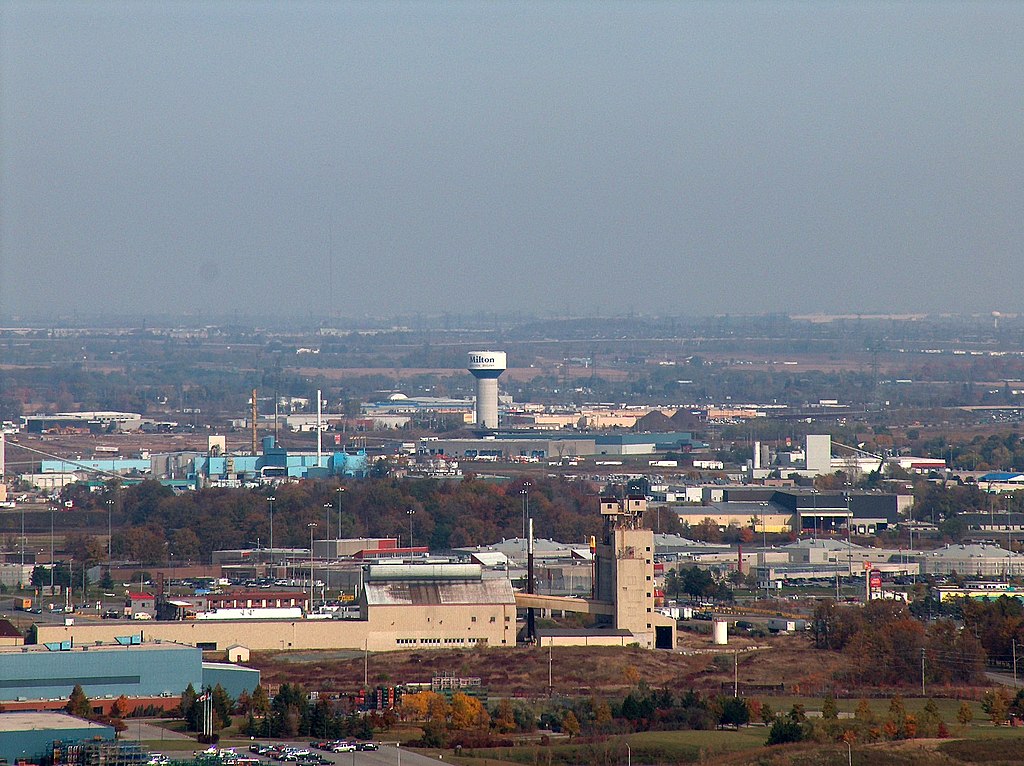Gary Gillman
Editor’s note: Gary Gillman, a Toronto, Ontario, Canada-based beer and food blogger, has graciously offered to share this post about Ginger Farm. He blogs at Beer Et Seq, where you can learn lots more about Ontario beer and food history.
Ginger Farm, Ontario
What is, or was, Ginger Farm? And wherefore its butter tart?
Ginger Farm no longer exists. It is covered today by tons of concrete, asphalt, and steel. But between 1924 and 1958 it was a working farm, near Milton, Ontario, Canada. Milton is a 50-minute drive west of Toronto along Highway 401, the broad ribbon vital to Ontario commerce. From Milton you can wend towards Guelph, Cambridge, Kitchener, London, Chatham, and finally Windsor where the bridge connects to Detroit, U.S.A.

In the late 1950s, 100-acre Ginger Farm was expropriated by the Ontario government to help build Highway 401. Part of the farm lies under the clover-leaf linking Highways 401 and 25. Atop the other part is Maplehurst Correctional Facility. Built in the early 1970s, it is known to initiates, I understand, as the Milton Hilton.
A book edited by David Patchell-Evans, Chronicles of Ginger Farm (Bastian Publishing: 2009), indicates Lancelot and Gwendoline Clarke purchased the property in 1924. Gwendoline, nee Fitz-Gerald, was born in Sudbury, Suffolk (England).

Lancelot, also from Suffolk, had emigrated to Canada in his teens. He worked in farming near Milton and pursued other occupations, before returning to Britain with the Canadian Army.
So the couple met in England, and decided to live in Canada. Once landed as newlyweds here, they travelled west to Moose Jaw in Saskatchewan to take up farming. After a few years they moved with their two children to Ontario, and purchased land for farming near Milton. That became Ginger Farm, where they remained for the rest of their lives.
In her spare time Gwendoline (d. 1966) authored a regular newspaper column on farming and rural life. The series was called “Chronicles of Ginger Farm”. David Mitchell-Evans is a grandchild of the Clarkes and collected many of her articles for his Chronicles book.
The farm was named Ginger, not because the ginger plant was cultivated there, but for reasons that combine whimsy, a literary sense, and knowledge of life’s hard knocks. As related in Chronicles, Gwendoline wrote in 1929:
…let me tell you, right here and now, in case there are any who don’t know it, that besides brain and brawn, it requires ginger of the highest quality and spiciest order to come anywhere near success [in farming], and the smaller the capital, the more ginger required.
It is a sign how much has changed that “ginger” in this sense sounds old-fashioned today.
Gwendoline Clarke’s Writing
Gwendoline with Ginger Farm became widely known in the Province of Ontario due to her newspaper work. The columns appeared in the Free Press of Acton nearby and were reprinted throughout Ontario. The Flesherton Advance, a newspaper in Ontario’s Grey Highlands, printed many columns.
Her writing also appeared in Britain, probably via the Canadian-founded Women’s Institute, which had branches there. Gwendoline was an active participant in Ontario’s Scotch Block chapter.
Her writing covers the years of the Second World War, especially how farmers coped with rising food prices and falling crop revenues. Many staples were short such as fruit, nuts, tobacco, and coffee.
Her columns limned the daily occurrences of farming life: raising crops, calving and other livestock management, the change of the seasons, the mercurial weather. Occasionally she describes seeking diversions, often a movie in a nearby town.
She was interested in new technology, anything that could make a busy farmer’s life less hectic. One column relates her assessment of the pressure cooker then becoming popular. She describes the different types available, and notes the great time saving in recipe preparation.
She entirely approved of the new method, and as to risk of explosion, she advised, well, just be careful!
Gwendoline’s writing demonstrates a lively and intuitive intelligence, practical but with a questing bent. This is shown by her interest in the past, and her expressed desire to read more than time allowed her. But she did find time to write on local history, outside the column.
She was perceptive both of animal and human natures, and in general expressed a live-and-let-live philosophy.
The Special Butter Tart
In a 1941 article* in the Flesherton Advance she describes a makeshift butter tart, the confection that (in our view) did not originate in Canada – think Scotland – but has become a Canadian specialty. Some types of pecan pie, or treacle tart, are a similar idea.
Due to wartime conditions currants and raisins were not available to enhance the egg, sugar, and butter base. She decided to use mincemeat from a jar in the cellar. Mincemeat need I say is the sweetened, preserved fruit mixture prepared in British-influenced cultures from time immemorial, especially for Christmas.
The unorthodox tart was a clear success, to the point taciturn Lancelot, whom she always calls “Partner”, praised its qualities, albeit “not solicited”.

As a busy farmer proud of her role co-running an ever-parlous business, Gwendoline had little time, is my sense, to record recipes, an activity she probably viewed as frivolous.
Still, the butter tart was so good she had to pass it on, to posterity’s benefit.
Gwendoline expressed the wish that her butter tart, should it find general approval, be called the Ginger Farm Special. This never acquired traction, to my knowledge, but it’s not too late. Readers of a cookery bent might fetch up some mincemeat and give it a try.
A reader’s report on the outcome would be interesting to read!
…………..
*To see the original article in Fulton Historical Newspapers, search “recipes and suchlike” at https://fultonhistory.com/Fulton.html. To view other Ginger Farm articles, search “Ginger Farm”.
